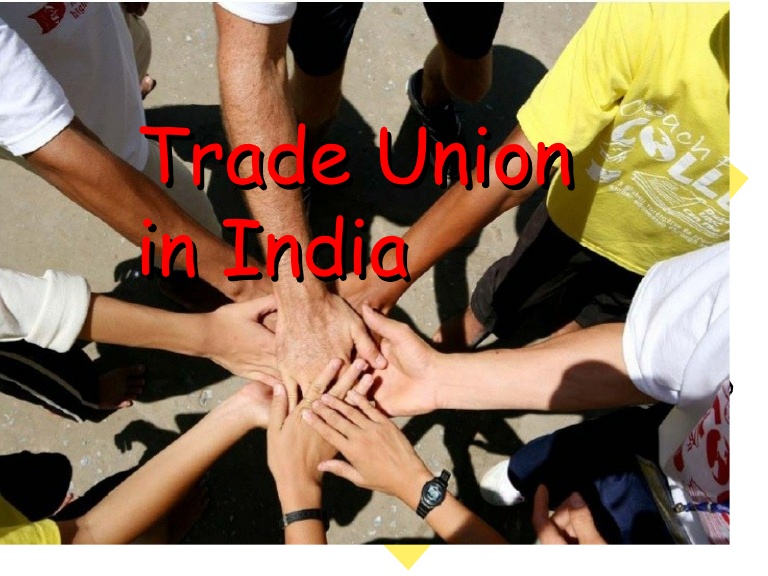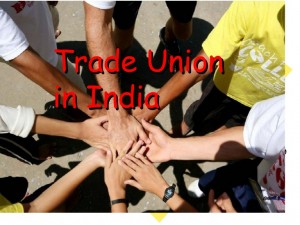Indian Labour Movement.
- Living conditions of workers – miserable.
- Establishment of Bombay Mill Hands Association – 1890 – president – N.M. Lokahnde .
- Objective –
- Invite attention of government and public to many grievances of the textile workers of Bombay.
- But they were not a trade union as they had no
- Membership
- Funds
- Rules
- No trade unions could grow – poverty and illiteracy.
1st World War period
- 1st World War – sparked off trade union movement in India.
- Sharp rise in prices, cost of living => wage lag
- Indian workers launched a series of strikes from 1918 to 1920.
- >200 strikes in first 6 months of 1920.
- Rising cost of living, ruthless exploitation and suppression, political agitation against foreign rule, establishment of ILO in 1919 => AITUC in 1920.
- AITUC had 64 trade unions when it was formed in 1920.
1920-29
- Features :
- Formation of AITUC
- Expansion in the no. of trade unions and membership
- Enactment of Indian Trade Unions Act, 1926
- Increase in freq of industrial disputes => work stoppages
- Split in AITUC
Formation of AITUC
- Direct result of establishment of ILO in 1919.
- Formed to represent Indian labour at International Labour Conference.
- British Trade Union Congress and American Federation of labour were setup – individual trade union operated in different contexts => felt the need to establish a central federation.
- Indian trade union => central came first, then individual trade unions in different industries.
- 1st president of AITUC – Lala Lajpat Rai
Expansion of the no. of trade unions and membership
- No. of trade unions continued to increase.
- Concentrated in the provinces of Bombay, Madras, Bengal.
- Considerable trade union activities – Railways, shipping, cotton, jute, mining, engineering, printing and paper.
Enactment of Indian Trade Union Act, 1926
- Need for nominating the workers’ representatives in ILO, Indian Trade Unions Act, 1926 was passed
- Provided protection against criminal liability under section 120(B) of Indian Penal Code to officers and members of the trade union registered under this act.
- Security against cases of civil damages arising out of trade disputes.
- Increase in frequency of Industrial Disputes
- Strikes and lockouts were very frequent.
- Crores of man days were lost.
- May 1, 1927 was celebrated at Bombay as the Labour Day – the symbol of opening of a new era of the Indian Labour movement as a conscious part of the International Labour Movement.
AITUC Split
- AITUC suffered three major splits dividing and weakening the trade union movement
- Happened at the Nagpur Session in 1929.
- 3 major parts
- Truncated AITUC
- Indian Trade Union Federation
- Red Trade Union Congress
1930-39
- Great depression and its effects on trade union activities
- Reunification of trade union movement.
Great depression and its effects on Trade Union activities
- Economic activities came to a standstill, falling prices, wage cuts, mass unemployment, starvation
- Decline in membership of trade union.
- Truncated AITUC, Indian Trade Union Federation and Red Trade Union Congress were not in a position to offer any resistance to the onslaughts of employers and deteriorating labour standards.
- Employers resorted to wage cuts, retrenchment and schemes of rationalization.
Reunification of Trade Union Movement
- There was a split in the Red Trade Union Congress in 1931.
- Indian trade unions were divided into 4 groups –
- Original AITUC – control of radicals
- Indian Trade union Federation – control of moderates
- Red Trade Union Congress – control of communists
- Group of independent trade union not attached to any central organization.
- Indian labour Movement was unified – 1940 – series of compromises – RR Gokhale, VV Giri, NM Joshi, Diwan Chamanlal.
- Happened at Nagpur in 1940.
1940-49
- Two major events:
- 2nd World War
- Indian independence
2nd World War
- Effects:
- Attitude towards the war and the split in the trade union movement.
- force to trade union growth and increase in the number of industrial disputes.
- beginning of the practice of paying DA and bonus.
- Creation of tripartite bodies in the field of labour and industrial relations.
- Attitude towards the war and the split in the TU movement
- AITUC became a divided house.
- Nationalists + communists = attitude of neutrality towards the war.
- Radical democrats went in for all-out support to the war efforts.
- The radicals formed a IFL – Indian Federation of Labour in November 1941. Jamna Das Mehta was the president.
- At the end of the war, there were 2 central federations,
- AITUC
- Indian Federation of Labour.
Trade Union growth and rise in the number of industrial disputes
- Trade Union movement gained impetus during the war.
- Prices and profits soared up because of shortage in consumer goods.
Dearness Allowance and Bonus
- To neutralize the effects of rising prices on workers’ real earnings due to the war. It was to be abolished after the war was over. But this didn’t happen.
- There were controversies and the courts decided that workers have a right to claim bonus out of the profit of the industry.
- Dispute resolved with the payment of bonus act, 1965.
Post Independence Period 1947-66
- The expansion of employment-intensive public enterprises resulted in the rapid growth of trade unionism within them.
- The central Government at that time exerted a major role in determining wages and working conditions. Trade union structures were highly centralized.
- A series of labour movement splits occurred during this industrializing period.
- Division in the labour movement continued with the creation of :
- Hind Mazdoor Sabha (HMS) in 1948
- The United Trade Union Congress (UTUC), 1949
- The Bharatiya Mazdoor Sangh (BMS) in 1955
- The United Trade Union Congress-Lenin Sarani (UTUC-LS) in 1951
- Various laws were introduced to regulate working and employment conditions and to systemize industrial relations.
- Industrial Employment (Standing Orders) Act (1946)
- The Industrial Disputes Act (1947)
- The Indian Factories Act (1948)
- The Minimum Wages Act (1948)
- The Plantation Labour Act (1951)
- The Employees’ Provident Fund and Miscellaneous Provisions Act (1952)
- The Companies Act (1956)
- The Maternity Benefit Act (1961)
1967-79
- Industrial stagnation set in from 1967 to 1979 – made more acute by oil price shocks in 1973 and 1978 – triggered inflation.
- Railwaymen’s strike in May 1974 provoked Prime Minister Indira Gandhi to issue a State of Emergency in 1975.
- The national emergency lasted from 1975 to 1977; during that time, the right to strike was suspended and union activities were restricted.
- Labour militancy became a common phenomenon, particularly with the extremely high labour upsurge.
- During the 1967-79 period, there were 2,437 strikes on an average per year, involving average of 1.87 million workers annually and 12.39 million lost work days.
- The situation was further worsened by a severe drought in 1979.
- The number of registered trade unions more than doubled, from 15,314 in 1967 to 34,430 in 1979.
1980-91
- The economy suffered from severe internal and external aggravations, resulting in an industrial recession from 1980 through 1981.
- From the mid 1980s, the Government imposed an economic liberalization policy that offered
- export incentives and
- encouraged domestic market competitiveness
- The labour market was made more flexible, making it easier for companies to subcontract and outsource their production of consumer nondurables to the unorganized sector.
- Such a flexible labour market brought an adverse impact on trade union activities and reshaped the industrial relations system.
- As a consequence of economic downturn and political suppression in 1981, the registered unions sharply declined from 34,430 in 1979 to 15,042.
- In 1991, the number of registered trade unions drastically increased.
1992-present
- After borrowing a massive bailout loan of US$1.8 billion from the International Monetary Fund (IMF), the economy became more open, liberalized and privatized than ever before.
- During the Bharatiya Janata Party (BJP) regime, Bharatiya Mazdoor Sangh (BMS) and its affiliates grew – membership of 6.2 million – the largest CTUO (central trade union organization).
- The 2004 election results required the formation of a coalition government – the United Progressive Alliance (UPA).
- The INTUC (Indian National Trade Union Congress), the second-largest CTUO (central trade union organization), wielded more political influence because it was aligned with the INC (Indian National Congress).
- The number of trade unions increased, but they became more divided at both the national and state levels.
- The number of CTUOs increased to 12 in 2008.





5 Comments. Leave new
Good effort!
Great work.. Nice efforts..
nice work
well written 🙂
Well traced genisis